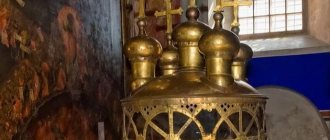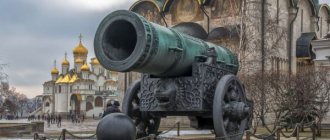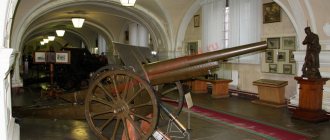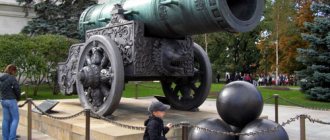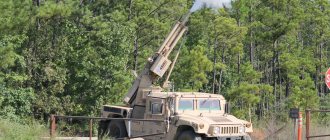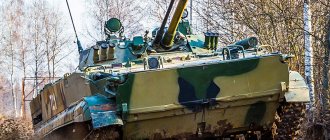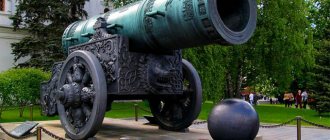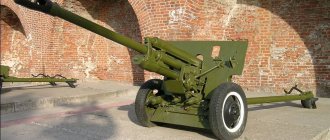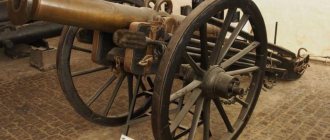How old is Russian artillery?
This mystical weapon appeared very late in the Russian army, but it is known that the Russian Empire had heavy artillery back in the 14th century. Its emergence may have occurred due to foreign intervention. According to archival data, the battle for Kazan was successful only after Ivan the Terrible used heavy artillery. Foreign military engineers, mainly Italians and Germans enlisted in the Russian army, were brought in to manage and operate it.
Around 1480, Prince Ivan III of Moscow managed to stop Khan Akhmat of the Golden Horde with heavy artillery. The commander of this unit was Aristotle Fioravanti, an Italian engineer considered by many to be a genius. There is also information that Moscow was guarded by Khan Tohamish, using artillery, including firearms.
New type of activity
As he gained experience, the Russian caster began to supervise the entire process. They intended to make a serious contribution to the modernization of technology, which is why the experienced artisan became an apprentice to the bellmaker Luka.
With him, Chokhov cast bells for the Spassky Monastery in the Moscow region. But first of all, the master remained a cannon. There is evidence that in the seventies Chokhov established his personal life and got married. By the beginning of the Livonian War, several arquebuses were cast for the Smolensk Kremlin.
In 1575 a battering cannon was made for the Belgorod Kremlin. At the same time, the master cast one of the best examples of his creativity, the “Wolf” cannon. An original novelty was the barrel, which tapered towards the end. The gun could fire both cannonballs and buckshot.
Together with other large guns, the Wolf was included in a special detachment left in Livonia. In the battles near Wenden, the guns captured by the Swedes shocked the commander so much that he ordered the transportation of trophies to Vilna.
In the winter of 1577, Chokhov made the most impressive siege artillery cannon, a squeaker with a unicorn, called “Inrog”. The foundry worker began work on the new “Wolf” in the fall of 1578. He was immediately taken to the place of fighting.
In 1591 it was captured by the Swedes. Both trophies were installed at Gripsholm Castle. The guns purchased under Peter the Great were returned to Russia.
Gunpowder and cannons in Russia
The production of gunpowder in the Russian Empire began around the 14th century; earlier it was purchased.
By the way, the khan managed to take Moscow partly because the Russian weapons system was not very good. Russian engineers still lacked knowledge, so the Tsars imported weapons from more industrialized countries. Moreover, at the end of the fourteenth and beginning of the fifteenth centuries, effective guns were supplied from Poland and Germany. At the beginning of the 15th century, Russian fortresses were armed with cannons.
The creation of Russian guns
— Advertising —
Having such weapons, many engineers tried to copy the technique. Creating cannons is a difficult task, while Europe used wrought bronze, the Russians decided to rely on wrought iron. The first attempts were unsuccessful due to the fact that most of the models were not airtight. Aristotle was invited to the Russian court, who taught engineers to make more effective gunpowder. The Italian faced some problems, but since his salary was probably one of the highest in the empire, he managed to attract other engineers and weapons manufacturers to begin a very long and interesting history of Russian artillery.
In addition to creating weapons, man spent time learning how to use and transport cannons. From 1479 he commanded the Novgorod artillery. They said that during the battle the cannons under the command of Aristotle did not rest for a minute, constantly defending the fortress.
In the mid-16th century, the Russian Empire had an existing arsenal, designed new models and developed new ideas. A Ministry of Cannons was created to control, to some extent, the development of weapons in the Kremlin.
Chokhov as a bell tower [edit]
Andrei Chokhov is also known as the creator of bells.
In 1594 and 1603, he had two huge bells (called evangelists
or blagovestniki) weighing 625 poods (10.2 metric tons) and 1,080 poods (17.8 t), respectively.
These bells were presented to Boris Godunov at the Trinity-Sergius Lavra. In 1621, Andrei Chokhov and other craftsmen cast four bells for the Ivan the Great Bell Tower (one of them called Glukha
(muted) can still be seen in the middle tier of the bell tower).
In 1622, Chokhov cast the 20-ton bell Reut
(Reut).
Its largest bell, weighing 40 tons (cast in 1600), has not survived to this day, like the so-called Godunov bell
(also known as the Old Assumption Bell or the Resurrection Bell), which was destroyed by fire in 1701. [2]
Tsar Cannons by Andrei Chokhov
Andrei Chokhov turned out to be one of the best Russian engineers, who during his career managed to develop more than 20 types of guns, as well as other military equipment. It remained famous in history for the so-called Tsar Cannons, the dimensions of which not only were not copied, but also probably set a record in the category of “Guns of the largest caliber”.
At that time, the king wanted the huge Tsar Cannon not to be used in battle, but to be placed in front of the palace to surprise his guests. Chokhov's creations remain in the Kremlin to this day. Unfortunately, the full arsenal of the royal cannons was reduced as during the time of Peter the Great there was a serious need for iron and bronze to create better artillery for use in the Great Northern War.
Chokhov Andrey
(between 1540 and 1545-1629) Russian foundry master
No direct evidence has been preserved about Chokhov’s life; even the year of his birth cannot be established with certainty. Usually they use a variety of documents, mainly related to the professional activities of the master. According to the tax documents, it is clear that Chokhov came from the family of a poor Smolensk merchant. Perhaps his father was a retired soldier who ran a shop in the city. The name of Andrei Chokhov was first mentioned in a note from the clerk, in which he asked to pay for teaching literacy and numeracy to several teenagers.
Then teenagers traditionally went on to study with masters, from whom they acquired skills in one or another craft. In the second half of the 16th century. Intensive construction was carried out in Smolensk, fortress walls were erected, guns and squeaks were cast. Therefore, it is not surprising that Chokhov ended up as an apprentice to a foundry master.
Smolensk became the western outpost of Russia, Tsar Ivan IV sought to turn it into an impregnable stronghold. The reconstruction of the Smolensk Kremlin was led by the famous Moscow architect Fyodor Kon. Several foundry masters came with him from Moscow, and one of them, the German foundry worker G. Ganus, became a student of A. Chokhov. He also helped another master, the Russian foundry worker R. Belokopyt. Under the guidance of visiting craftsmen, Chokhov completed his first independent work - he cast several arquebuses to be placed on the walls of the Smolensk Kremlin. Then he received his first reward - money and a piece of cloth.
After finishing work in Smolensk, Ganus and his students were returned to Moscow. Among them was Chokhov. Arrivals are accommodated in a common house for workers, built on the Cannon Yard. During the time of Ivan the Great, foundries were located on a vast fenced area located on the site of modern Pushechnaya Street. Here the rest of Chokhov’s life passed.
Since the early fifties, Russia has been preparing for the Livonian War with Sweden for the right to access the Baltic Sea. Ivan the Terrible had a good idea of the future enemy and sought to strengthen the army, especially the artillery. At the Cannon Yard, many different weapons were cast: squeaks and cannons, which immediately went into service with the army, forming the so-called artillery outfit. Everyday work became a school of foundry skills for Chokhov. In addition to casting military weapons, he also carries out unique orders. Craftsmen cast huge cannons, intended not only for the defense of Moscow, but also to intimidate foreigners visiting the Russian capital.
In September 1554, Ganus and Chokhov completed the casting of a huge cannon weighing 1,200 pounds (19,200 kilograms). True, according to modern concepts, it should probably be called a mortar intended for the destruction of fortresses. The gigantic weapon was not sent to the army, but was placed near the Nikolsky Gate of the Kremlin, opposite the Church of the Intercession on the moat. A year later, a second similar mortar, also cast by Chokhov, was installed near it.
The master put his own mark on each of the cannons, writing “student Andrei Chokhov.” Probably, the tools were the last major works he completed together with his teacher. In 1566, Ganus died and Chokhov was appointed in his place. Three cannons cast in the fall of 1566 already bear the inscription “Master Andrei Chokhov.”
It is known that, having become one of the leaders of the Cannon Yard, Chokhov carried out its reconstruction - he achieved the construction of a second foundry furnace and the expansion of the territory for the construction of another sprue (a hole dug in the ground into which a mold for casting a cannon was installed).
At that time, casting a gun was a complex and multi-stage process. It began with the making of a wooden model of the future gun; on the surface of the model, the master carved an ornament that in the future would decorate the gun barrel. Then the wooden model was coated with a thick layer of clay, to which manure was added. When the clay dried, the wood was removed. The resulting casting mold was placed in a special pit. A core was lowered into the middle of the mold - a log coated with clay and manure. Then the long casting process began. Since the cast iron cooled quickly, the gun was cast in several stages. When the casting cooled, it was lifted from the pit, freed from clay and placed on special trestles.
Now came the hardest part of the work. The surface of the gun was freed from defects, and the internal bore of the barrel was polished to achieve a smooth surface. Typically, the foundry master supervised the work, which was carried out by a group of journeymen and apprentices. This is what Chokhov was like at the beginning of his career.
Gradually he gained the necessary experience and began to manage all operations. It is known that Chokhov sought to improve casting technology. Perhaps that is why, shortly before the death of Ganus, he became a student of the bell maker Luke. It is known that together with him Chokhov cast the bells that were hung in 1561 on the bell tower of the Spassky Monastery on Lake Kubenskoye near Moscow. However, he continued to remain primarily a cannon master.
Probably, around the end of the seventies, Chokhov got married, because it was at that time that he received permission to build his own house on the territory of the Cannon Yard.
After the outbreak of the Livonian War, Chokhov casts several arquebuses for installation on the walls of the Smolensk Kremlin. In 1575, he made a battering cannon, decorated with the image of a dog's head. It was installed in the Belgorod Kremlin. In the same year, the master casts one of his best weapons - the Wolf cannon. In it, he uses a novelty that was original for that time - a trunk tapering towards the end. Usually craftsmen cast cannons with a barrel that expanded at the muzzle. Chokhov acted differently, creating a weapon of a fundamentally different type. Such a cannon made it possible to fire not only cannonballs, but also buckshot. When firing small projectiles, the radius of dispersion decreased and at the same time the accuracy of hitting the target increased.
By order of Ivan IV, the “Wolf” and several other large cannons were separated from the main army and included in the “special squad” - a detachment that remained in Livonia.
During the battle near Wenden (the modern Latvian city of Cesis), Russian artillery was captured by the Swedes. The Swedish commander was so impressed by the guns that he ordered them to be transported to Vilna and put on display there for everyone to see.
Having learned about the capture of the guns, Ivan the Terrible ordered new guns to be cast as soon as possible. In the winter of 1577, Chokhov made a arquebus with an image of a unicorn - “Inrog”. It weighed almost 7.5 tons and became the largest cannon of Russian siege artillery. At the same time, the foundry worker began working on the new Wolf cannon. In the fall of 1578, he cast a cannon that was larger in size than its predecessor. The new weapon was consecrated and immediately taken to the battle arena.
Chokhov's product served well for a number of years, but in 1581 the Swedes managed to capture it, and both guns were installed in Gripsholm Castle. They were recognized as unsurpassed examples of foundry art. It is known that the Swedes showed guns to foreign ambassadors. At that time, no other country produced such products. Under Peter I, Russian merchants bought the guns and brought them to Russia.
Having become one of the leaders of Russian foundries, Chokhov creates his most famous creation - a richly decorated mortar, which went down in history under the name “Tsar Cannon”. Among other decorations, there was also a portrait of Tsar Fyodor Ivanovich. Work on casting the cannon continued for two years and was completed in the summer of 1586. The cannon weighed 2,400 pounds (38,400 kilograms). By order of the Tsar, she was transported to Red Square and placed near the Moskvoretskaya crossing. To carry out transportation, Chokhov made a special cart, which was harnessed to 200 horses.
In 1598, the Tsar Cannon was moved to the center of Red Square and placed on a special platform next to the newly built Execution Ground. There it stood until the end of the 17th century. , and then, by order of Peter I, she was transported to the Kremlin “for the memory of posterity.” It is interesting that the cannonballs now lying near the gun were not intended for the Tsar Cannon and also served to intimidate a possible enemy.
The heavy guns used in most armies required a lot of time to prepare for firing. To increase the rate of fire, craftsmen in many countries began to design multi-barreled systems. In the Russian army, “magpies” were widespread - arquebuses with forty barrels. Chokhov decided to increase the number of barrels and for this he developed a special system for casting, which took place simultaneously in two furnaces. In 1588, the master managed to cast one hundred barrels in one melt. True, such a weapon turned out to be more of a demonstration weapon than a combat one. Probably Chokhov created it to develop casting technology.
The period from 1587 to 1605 turned out to be the most fruitful in Chokhov's activities. Soon the master introduced another new product - a fiery arquela - a cannon that could fire incendiary and illuminating projectiles.
Since the late eighties, Chokhov began to cast bells. The master’s first major work was the “Swan” bell, cast for the Trinity-Sergius Lavra in the spring of 1594. Then two large bells were cast for the Moscow Kremlin, the largest of which is considered the “Ivan the Bell,” which weighed 4,000 pounds.
At that time, Chokhov was working with a group of students, and the master’s name was mentioned among others in the lists of awards. Chokhov constantly made sure that his students were visible. Once he even submitted a special petition in which he asked to note the work of Prokhor Fedorov, his student. “Out of negligence” he was not granted the honor along with the other masters.
Although the casting of bells was considered the most prestigious of all possible orders for foundry workers, Chokhov continued to consider himself a cannon master and even signed the manufactured bells “cannon master Andrei Chokhov.”
His last major works were several battering guns, richly decorated with carvings. The first of them, called “Achilles,” was cast by Chokhov in mid-1617. He made a special cast-iron carriage, also covering it with ornaments. Following the Achilles, Chokhov and his students cast the third copy of the Wolf cannon and an even larger weapon, the Krechet. By order of Tsar Mikhail Fedorovich, guns were installed in the Kremlin.
The last time Chokhov's name was mentioned was in the document for the issuance of salaries dated December 23, 1629. The name of the master does not appear in documents for 1630.
Trench gun
His school managed to educate entire generations of masters. And while some engineering developments have managed to prove themselves and even become standards, others have not achieved such success.
— Advertising —
An example is the trench (trench) cannon, which was not invented by the Russians; the original author was Friedrich Getkant, a German who served in the Polish distribution. When drawing up the idea for his cannon, he consulted with students such as Hans Timson.
A few years later, Hans commanded Colonel Bowman in Moscow, and it was there that he shared the secrets of Hettkant.
Russian gunner Alexey Lobin later decided to test the idea by digging a huge hole to install the gun. After the cannon was buried, its interior was filled with gunpowder, and then with bombs, stones and other heavy materials. The cannon used a longer fuse which, upon detonation, sent the contents flying and scattered them into the air, creating a nasty rain of rocks. The total weight of one charge ranged from 16 to 32 kg.
After a certain number of shots, such a gun needs calibration again, as well as checking the core itself, which could be damaged. While most modern artillery pieces can use a variety of methods to calculate the target, the trench gun required calculations before digging in. This is why one of the most common military exercises is gun camouflage and marksmanship.
— Advertising —
Judging by military history, this technique was widely used only in the period from 1674 to 1676 during the attack on the Solovetsky Monastery. Located on a small island, it did not allow large bronze cannons, which were already in service with the tsarist army, to be transported there. The monastery was defended with 6 trench guns, several buckets of nails and stones. As for secrecy and use, the instructions for their operation were lost by the end of the 17th century.
Works of a master gunner
A lot of guns were cast. The weapons were immediately sent to the army for artillery detachments. Routine work turned into a matter of life for Andrey. He also received unique orders.
Giant cannons were not only intended for defense. They were used to impress foreigners who arrived in Moscow for unknown purposes.
In September 1554, Chokhov and Ganus cast a huge cannon over a thousand pounds. The gigantic mortar was not sent to the army, but was left in front of the Kremlin Church of the Intercession on the ditch.
A year later, a second cannon, also by Chokhov, appeared next to it. Each one bore a stamp with the inscription “Chokhov’s student.” Together with the teacher, he completed the last joint work. From 1566 the work was carried out without the deceased Ganus.
The cannons cast in the autumn of 1566 are marked as products of master Andrei Chokhov. He was appointed one of the leaders of the reconstruction of the Cannon Yard.
The new boss achieved the installation of a second furnace for casting, expanding the territory for the arrangement of a new sprue for installing gun-casting molds. The casting procedure began with a wooden model.
An ornament was carved onto the surface of the model. The tree was coated with a clay layer mixed with manure. The wood was removed after the clay had dried. The resulting mold was placed in a special pit, with a core and a log coated with a clay-manure mixture lowered into the middle of the casting.
The cooled casting was lifted up, freed from clay, and placed on special trestles. The surface was cleaned of defects and the internal stem channel was polished. Usually the master supervised the activities of apprentices and students, such as Chokhov earlier.
Wooden rockets
Another secret weapon used by the Russian army were wooden rockets, discovered around 1674 during the Siege of Chigirin.
Alexey Lobin wrote that they were invented by an unknown foreign major in Russian service. He created wooden cones that looked like a rocket, but placed different amounts of gunpowder at the bottom. Due to its small quantity, no explosion occurred - the rockets, each about 6 meters long, flew over the fortress walls and started fires. Due to the presence of very strong corrosive smoke, people inside the fortresses could not extinguish it in time.
The missiles themselves did not fly under their own power; most likely, they were thrown using a catapult, creating great trouble for the enemy. Some secret weapons were ahead of their time, while others were science fiction.
Artillery during the siege of Kazakhstan
During the siege of Kazakhstan, Ivan the Terrible arrived with an army of about 150 thousand people. The fortress walls were made of wood and stone, and their height is more than 9 meters. The conquest of this fortress required non-standard solutions, and the Russian Tsar already had artillery and time. Delivery of 150 guns from Moscow took about 3 months and another 7 days for assembly.
After several weeks of shelling, the walls still withstood heavy blows. That is why the next idea was born - the creation of artillery towers, similar to those used for jumping over walls.
Using wood from a nearby forest, as well as a little help from Italian and German artillery engineers, Ivan the Terrible managed to create one of the earliest versions of the tank. Having risen to a height, they were able to fire through the walls. Ivan the Terrible positioned them at a safe distance of 6 meters from the walls and so began to destroy the enemy. After the artillery was delivered, the entire siege lasted about 32 days.
Apprenticeship time
The foundry worker was born between 1540 and 1545 in Smolensk.
The son of a poor merchant was sent to learn literacy and numeracy. After this stage, teenagers were usually sent to craftsmen, where the children learned a craft. In Smolensk, fortress walls were erected, and cannons and arquebuses were cast. Chokhov and was sent as an apprentice to a foundry worker.
Foundry masters also arrived from Moscow with the famous architect Fyodor Kon. The teenager was assigned to Ganus. Under the guidance of experienced mentors, Andrey completed his first job.
He cast a squeak. At the same time, the novice artisan received his first award. After completion of the work, the visitors and their students returned to Moscow. The move dramatically changed Chokhov's biography.
Foundry workers were settled on the site of modern Pushechnaya Street. Ivan the Terrible tried to strengthen the army. He paid attention to artillery.
